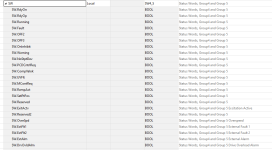CM3
Member
I'm a Siemens person, and this is one of my first AB programs.
The customer wants everything programmed in Ladder.
I have a lot of data (3 integers worth of bool values) that I am moving from a group of non-concurrent words that I am receiving from the bus. These words break into individual Boolean operators. I know I can do a ladder run to convert each word bit into a local argument, (or use the Boolean operator directly from the word). What I would like to do is define a UDT structure with all of my operators, and then move the words to write into that structure; but I don't know if this is possible in AB.
So far I have looked at using BTD to grab the words and place them - but that does not appear to work for a UDT type for placement. I looked at doing a COP instruction - and this will work for single words - but I am dealing with 3 words. I tried to build an array of word, stack my non-concurrent words into a concurrent format and then COP them into the UDT - but COP didn't like being assigned to the header of the array instead of a direct array address.
Is there a way to do this that I am missing?
The customer wants everything programmed in Ladder.
I have a lot of data (3 integers worth of bool values) that I am moving from a group of non-concurrent words that I am receiving from the bus. These words break into individual Boolean operators. I know I can do a ladder run to convert each word bit into a local argument, (or use the Boolean operator directly from the word). What I would like to do is define a UDT structure with all of my operators, and then move the words to write into that structure; but I don't know if this is possible in AB.
So far I have looked at using BTD to grab the words and place them - but that does not appear to work for a UDT type for placement. I looked at doing a COP instruction - and this will work for single words - but I am dealing with 3 words. I tried to build an array of word, stack my non-concurrent words into a concurrent format and then COP them into the UDT - but COP didn't like being assigned to the header of the array instead of a direct array address.
Is there a way to do this that I am missing?





